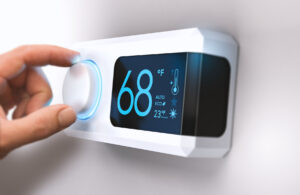Millions of households in the United States suffer from mold problems. Others may even find that they develop respiratory issues because of the mold in their home. Thankfully, certain precautions can help reduce complications, especially for people with weakened immune systems.
Mold is not usually represented by black patches. Sometimes, it hides in inaccessible places, spreads allergenic spores, and grows.
Today, we will help you get rid of mold and make your home safer. Read on to discover what to know about dealing with mold.
Mold in the Bathroom
The bathroom is a great environment for mold growth. If damp, warm, and dark surfaces are not cleaned, mold can form. Be wary of gushing water. Mold forms between the tub and the toilet, and is very visible in tile grout. Mold is particularly fond of the bathroom sink, discarded bottles, and bathmats.
To avoid mold growth, ventilate before, during, and after showers and baths. Weekly comprehensive bathroom cleanings may also help to prevent mold growth.
Mold in the Doors and Windows
Condensation can cause mold to grow on windows, screens, and sills. Furthermore, outdated rubber window and door seals may separate, allowing mold to grow. Check these places if you open your home during colder or more humid weather.
Mold in HVAC Appliances
Mold is common in restrooms and air conditioners. Window air conditioners leak and cause condensation. Mold takes around a day or two to grow on a damp surface.
A/C coils may freeze owing to constant use during the hot summer months. Mold can grow while the air conditioner freezes and thaws. Additionally, faulty emergency shutoff switches pose an additional risk to HVAC systems.
A drainage pipe that is clogged should drain into a tray and trigger a buoy switch. Otherwise, the tray’s contents will flow onto the floor/carpet/floorboards. A puddle will form in the corridor if nothing is done. As a result, mold can grow on walls, carpets, and floors after a large leak.
Mold in the Refrigerator
The refrigerator condenses in the same way that an air conditioner does. The refrigerator’s coils may shed moisture in a heated atmosphere. The ice machine, the water dispenser, and the spillage in front of the refrigerator all play a role in mold formation when not maintained regularly.
Always clean the area around and beneath the refrigerator. If at all possible, also keep an eye on the ice in the refrigerator.
Mold in the Sink
Despite daily cleaning, the kitchen is a breeding ground for mold. Darker surfaces may camouflage mold in the corners as well as under the sink.
Mold is attracted to dish caddies, old sponges, and faucet knobs, among other things. As such, check for cracks and flaking in the caulking on backsplashes and countertop edges. Mold can also develop undetected in these microscopic crevices if water gets in between.
Furthermore, be wary of black mold if you get sick frequently or have breathing problems.
Mold in the Washing Room
Mold will grow if the washer overflows, leaks, or the hose fitting gets loose. Mold development can occur when dryer vents become clogged or uncovered.
Mold in the Vents and Attic
Mold thrives in leaking ducts and attics, but they are often unseen. If you have been experiencing health issues, have your vents and attic inspected. Only a qualified mold removal service can ensure healthy indoor air quality once mold has invaded your ventilation system.
Conclusion
Once you discover mold, make sure you act right away. Some home products may remove all traces of a chemical depending on their location. Remember, however, that mold exists beneath the surface.
Only experts have the skills and tools to remove excess mold and keep it from returning. Visible mold demands additional investigation to determine whether the surrounding materials or structure must be replaced.
Are you looking for professional mold remediation in Fresno? Trademark is here to keep your home beautiful, healthy, and safe. Contact us today to learn about our services!




